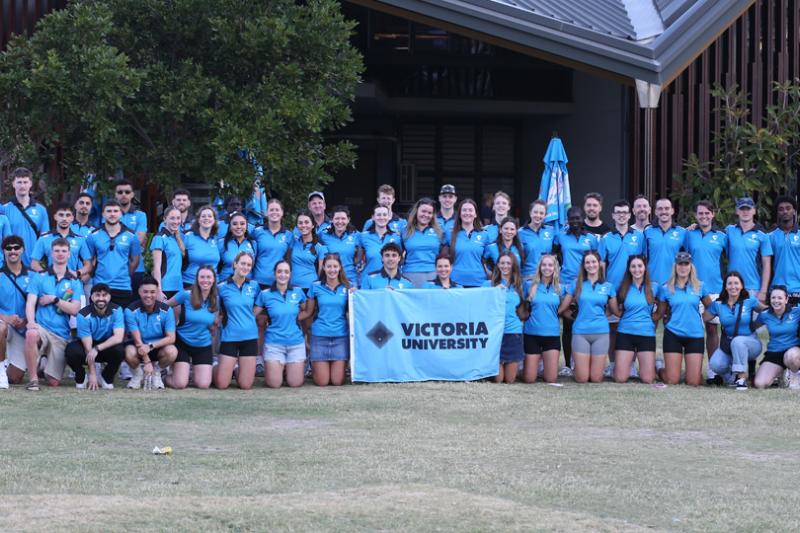Victoria’s power outage could have been far worse. Can we harden the grid against extreme weather?

Last week’s destructive storm took Victoria by surprise. As winds of up to 150 kilometres an hour raced through the state, transmission towers near Geelong toppled and the grid went into chaos.
At its worst, almost one in five Victorian homes were left without electricity while the main transmission system came close to collapse.
That makes it comparable to Victoria’s last grid-crippling storms in October 2021.
But this power outage could have been much worse. It speaks to the urgent need to harden our grid against the more frequent extreme weather expected under climate change.
What actually happened?
It was very hot in Victoria on February 13. Fires raged in central Victoria, claiming dozens of houses. When a cool change arrived, it brought extreme winds.
At about 12.35pm, Australia’s largest windfarm, Stockyard Hill, disconnected from the grid, as a grass fire threatened its grid connection.
As it happens, the loss of the windfarm was actually a lucky break.
At 2.08pm, six of Victoria’s highest voltage transmission towers (500 kiloVolt) were toppled by extreme downdrafts. This catastrophe took out two sets of 500 kV powerlines transporting much of the electricity from wind farms in western and south western Victoria to Melbourne.
At the time of collapse, the circuits were likely fairly heavily loaded. They would have been much more heavily loaded had Stockyard Hill windfarm not dropped off the system 90 minutes earlier from the unrelated grass fire.
In response to the 500 kV faults, voltages dipped, forcing all four of the large coal-fired generating units at Loy Yang A to disconnect. Two wind farms in western Victoria were disconnected automatically, as intended in their cases.
During most of the transmission crisis, rooftop solar became the largest source of supply in Victoria.
In addition to the transmission events, Damage to local distribution poles and wires was widespread, especially in regional Victoria. This cut power to about one in five Victorian homes.
In about two hours, the power system had stabilised. Gas and hydro generators rushed in to fill the gap left by Loy Yang A and the wind farms, and Victoria got through its evening peak. Many homes on however still remain without power through distribution network failures.
In response, the Victorian government has announced it will appoint an independent panel to review the disaster, closely following the review of devastating storms in June 2021.
In the final recommendations from the review of the 2021 storms, the panel played it safe, calling for better communication with affected communities, beefed up emergency responses and relief delivery and so on.
The government also accepted a key recommendation: any major changes to strengthen network resilience should be referred to the Australian Energy Markets Commission, thereby kicking the big challenges into the long grass.
This time round, the omens are inauspicious. The government has explicitly excluded transmission from its review, instead relegating it to the electricity safety regulator. This is short-sighted. The Victorian transmission network is heavily exposed to weather risk and it is getting worse.
What should be done about it?
This won’t be the last grid-buckling extreme weather we’ll see. Far from it.
There are many things that can be done to reduce weather risk, and putting high (and low) voltage lines underground is often spoken about.
It will be expensive. In the wake of devastating fires, California’s largest utility committed to put 16,000 km of lines underground. So far, almost 1,000 km has been completed. But the cost has been substantial – around A$3.2 million a kilometre.
Victoria has 148,000 km of distribution lines of which 84% is overhead and 16% underground, a similar proportion to the rest of Australia. It’s much easier and cheaper to put distribution lines underground than transmission lines.
If we optimistically assume the same cost as in California, boosting the proportion of Victoria’s distribution network that is underground by 10 percentage points (to 26%) would cost around $37 billion. That’s more than double the regulatory value of the distribution network in Victoria.
Is enhanced vegetation management – widespread tree clearing near lines cheaper? Perhaps not. Research in California suggests undergrounding may actually be more cost-effective in terms of fires avoided.
More cost-effective than undergrounding are rapid switches, devices able to quickly clear faults and reduce the chance downed lines will start fires. Victoria began requiring distributors to install these from 2016, following the state’s 2009 Black Saturday fires, where downed powerlines sparked several lethal blazes. Their effectiveness is yet to be proven.
These are difficult questions and much is to be gained by considering them carefully. This will require the government to reach for more than another set of “must-try-harder” recommendations.
What about building new transmission lines?
Even as extreme weather topples huge transmission towers, state and federal governments are pressing ahead to build more. Expanding transmission capacity is important to decarbonise our electricity supply. But if not done well, it will increase exposure to weather risk.
Our study of VNI-West, the proposed massive new Victoria-New South Wales interconnector, found it would greatly increase Victoria’s energy security risk.
Why? Because it will be very heavily loaded, much more so than the 500 kV lines that failed last week, and it carries two sets of conductors on one set of towers.
This proposed new interconnector will make Victoria deeply dependent on NSW for its electricity supply. In a little over a decade Victoria is expected to import 26% of its grid-supplied electricity, much of it conveyed on VNI-West. This is an astonishing and little-known aspect of Victoria’s existing electricity policy.
Vandalism or extreme weather could, at a stroke, disable this new transmission line. In our report we drew attention to sabotage and weather risk and since out report we have seen yet more evidence of sabotage, and now we have another clear example of the risks from extreme weather.
To date, Australia’s market operator has brushed off our critique without reason.
Victoria dodged a bullet last week. It could have been far worse. To be ready for the next major storm, we should at the very least have a bipartisan parliamentary inquiry into the events of February 13. And this must scrutinise whether the proposed Victoria-NSW interconnector could survive a similar event – and what would happen if it did not.
This article is republished from The Conversation under a Creative Commons license. Read the original article.
![]()



